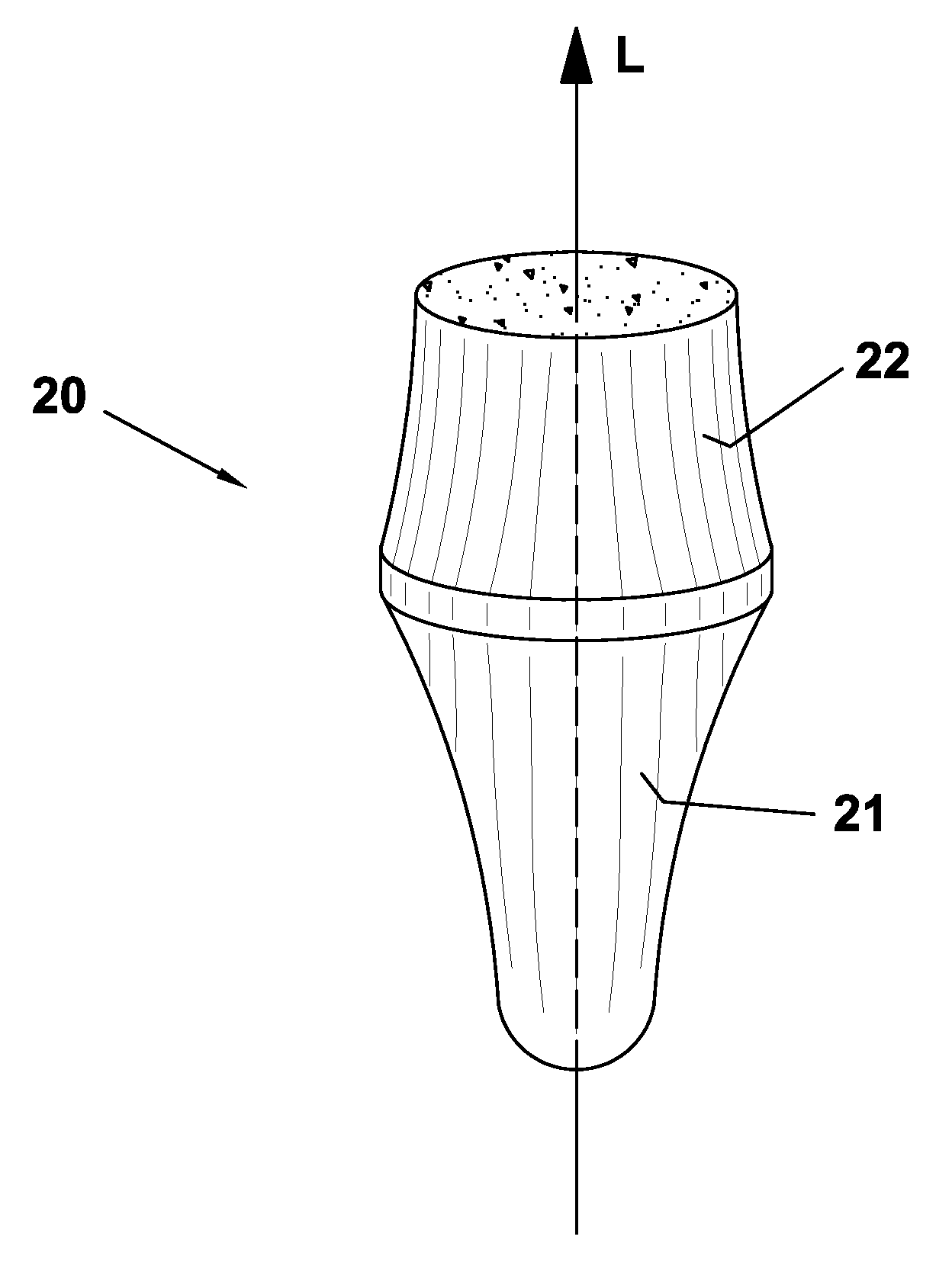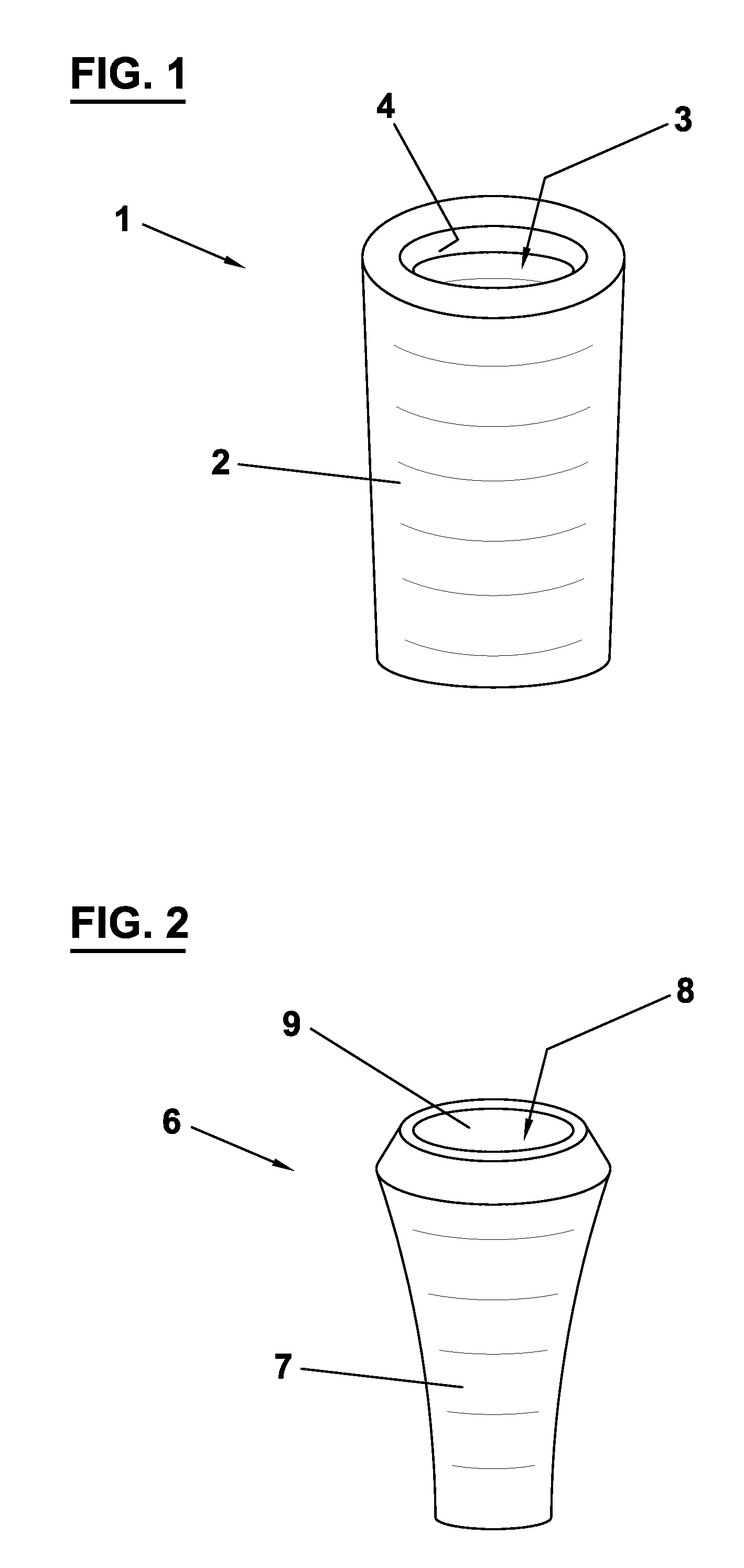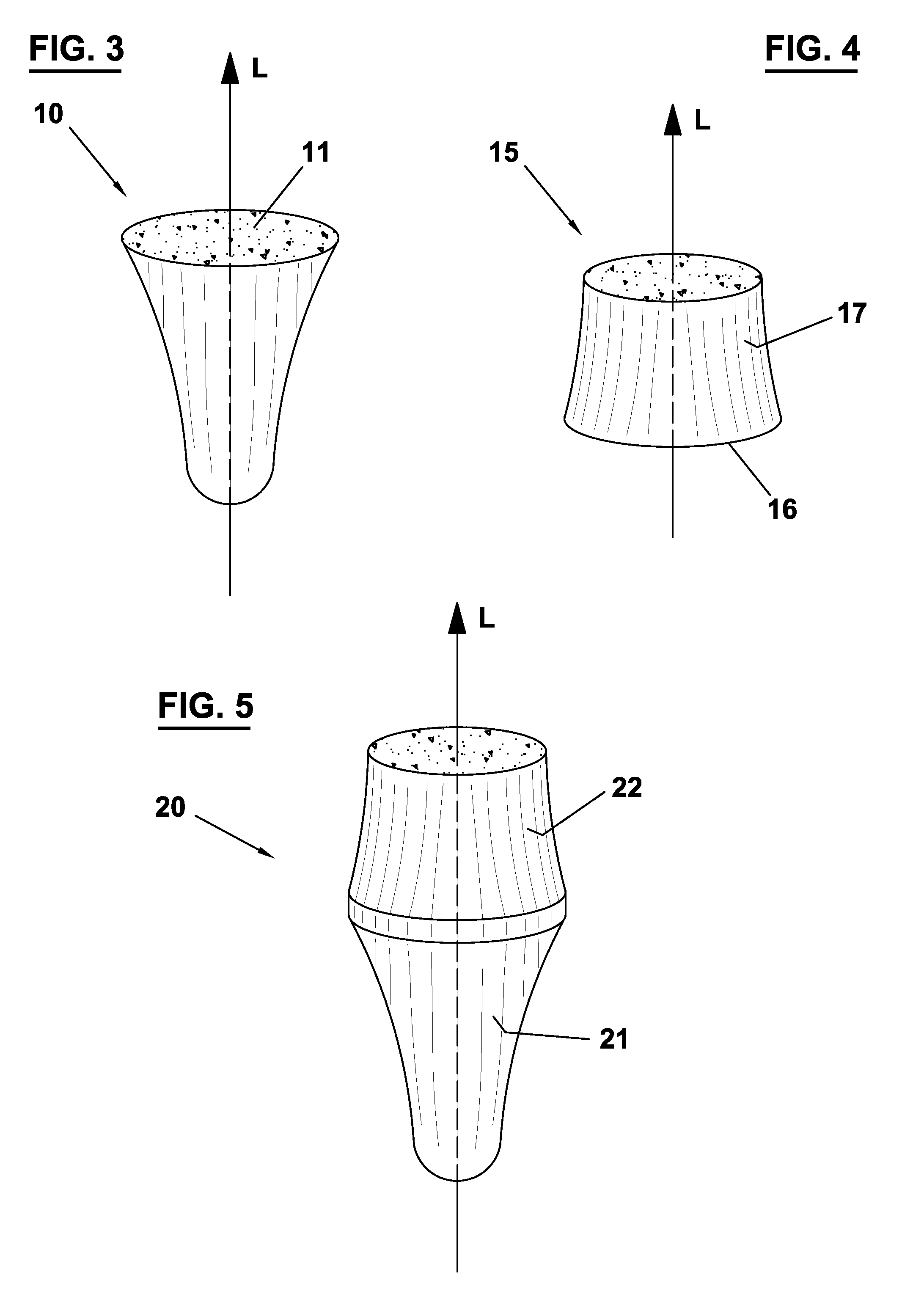Dental implant
a technology for dental implants and implants, applied in dentistry, dental surgery, medical science, etc., can solve the problems of increased bruxism, inability to adequately absorb masticatory stress on the artificial tooth structure, and all these materials have the disadvantage of being too stiff and brittle, and achieves convenient application and positioning, cost-effective, and advantageous fixation of the abutment on the implant.
- Summary
- Abstract
- Description
- Claims
- Application Information
AI Technical Summary
Benefits of technology
Problems solved by technology
Method used
Image
Examples
Embodiment Construction
[0038]FIG. 1 depicts an anchoring member 1 constituting a first component of a dental implant. The anchoring member 1 is configured to be anchored into a jawbone and comprises an anchoring wall 2 consisting of titanium, stainless steel, ceramics or another osseointegratable material. The anchoring wall 2 encloses an anchoring cavity 3 extending in an apical direction, wherein the cross section of the cavity 3 continuously decreases in the apical direction. The anchoring member 1 comprises a coronal opening 4 in which other constituents of the implant are insertable. The anchoring wall 2 can have an essentially smooth outer surface or it can be provided with retention structures to improve the anchoring in the bone tissue. The thickness of the anchoring wall increases in the apical direction.
[0039]FIG. 2 depicts a sleeve member 6 constituting a second component of the dental implant. The sleeve member 2 is insertable and removable into the anchoring cavity 3 of anchoring member 1 via...
PUM
 Login to View More
Login to View More Abstract
Description
Claims
Application Information
 Login to View More
Login to View More - R&D
- Intellectual Property
- Life Sciences
- Materials
- Tech Scout
- Unparalleled Data Quality
- Higher Quality Content
- 60% Fewer Hallucinations
Browse by: Latest US Patents, China's latest patents, Technical Efficacy Thesaurus, Application Domain, Technology Topic, Popular Technical Reports.
© 2025 PatSnap. All rights reserved.Legal|Privacy policy|Modern Slavery Act Transparency Statement|Sitemap|About US| Contact US: help@patsnap.com



